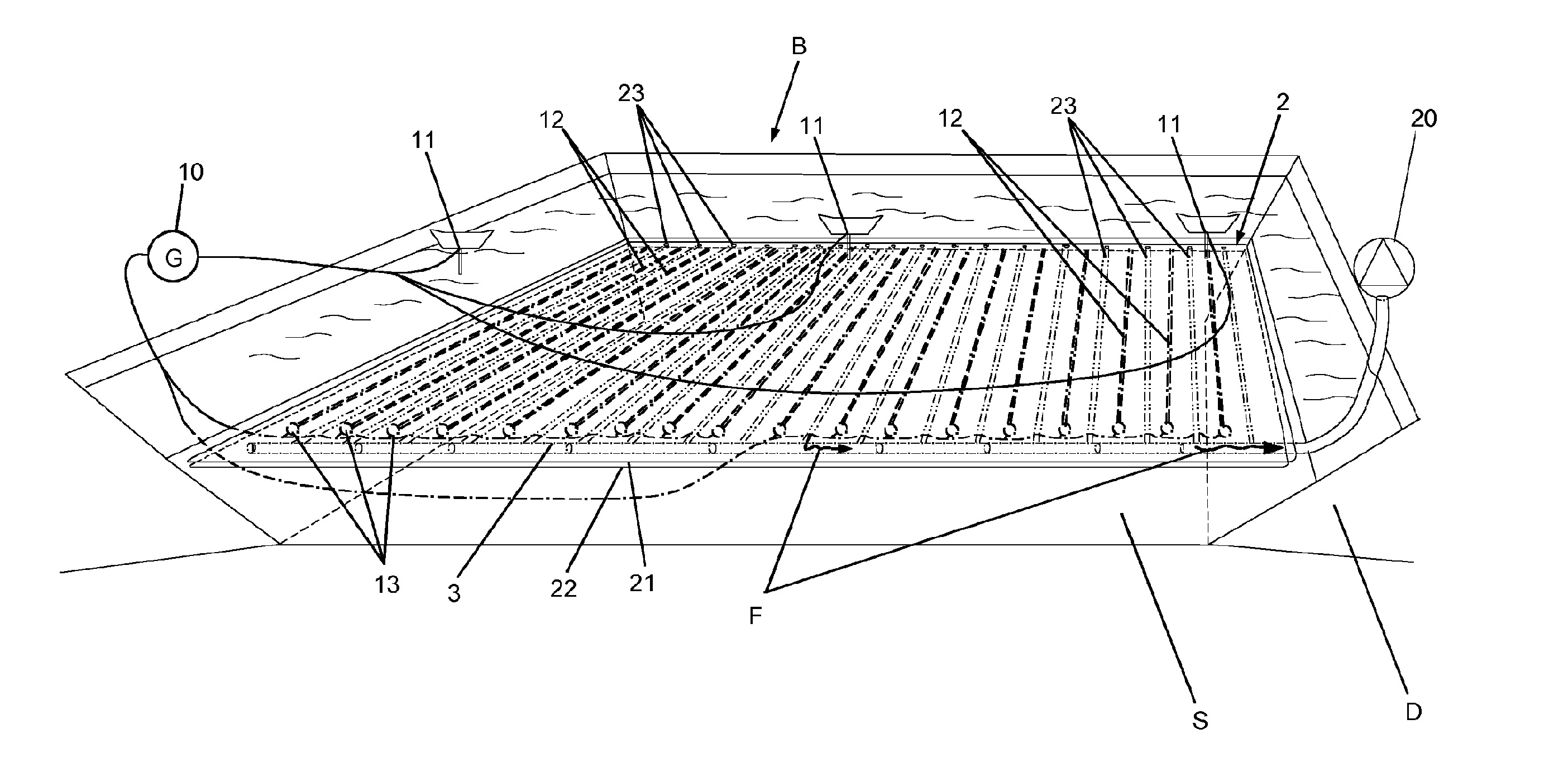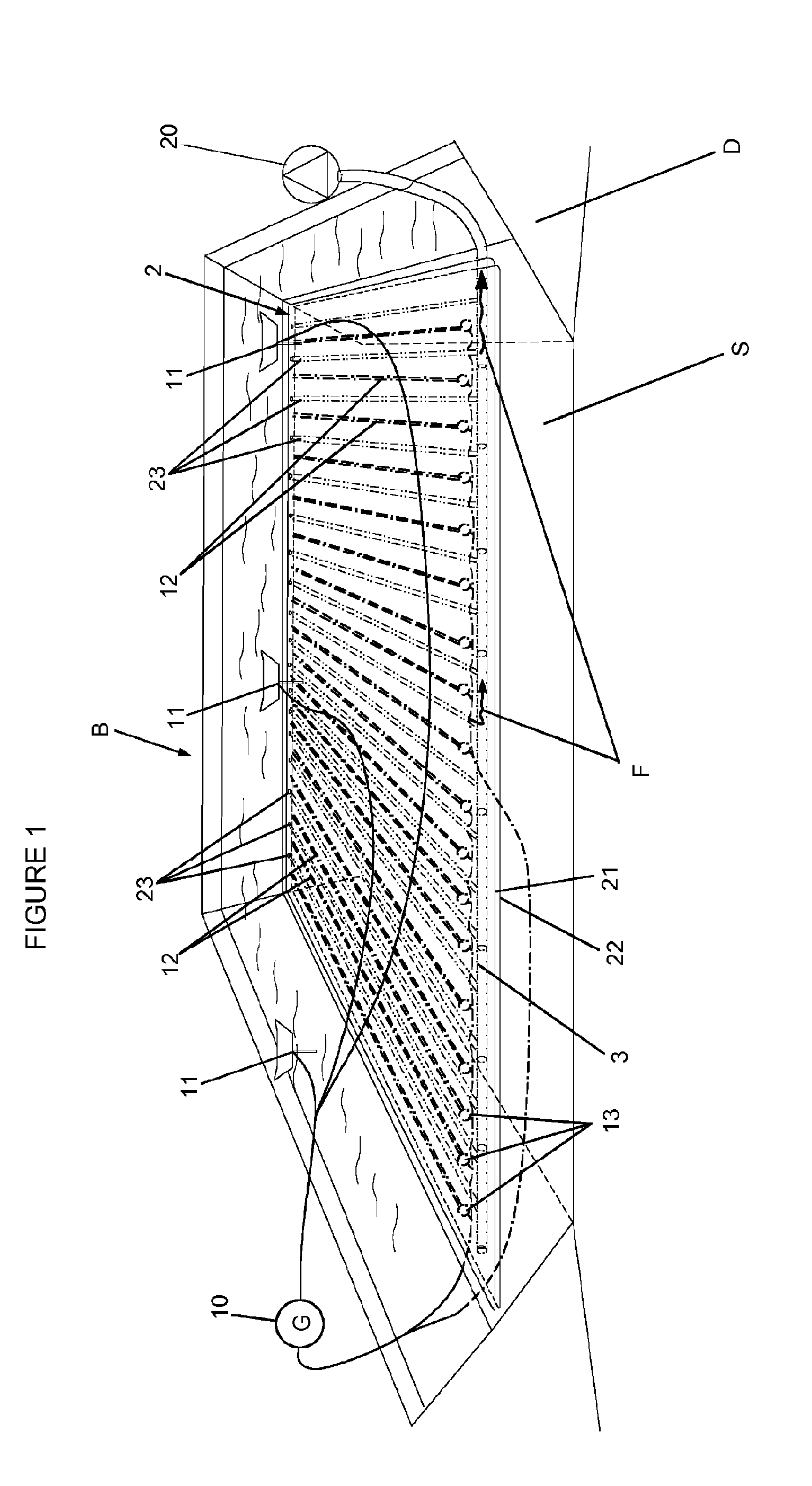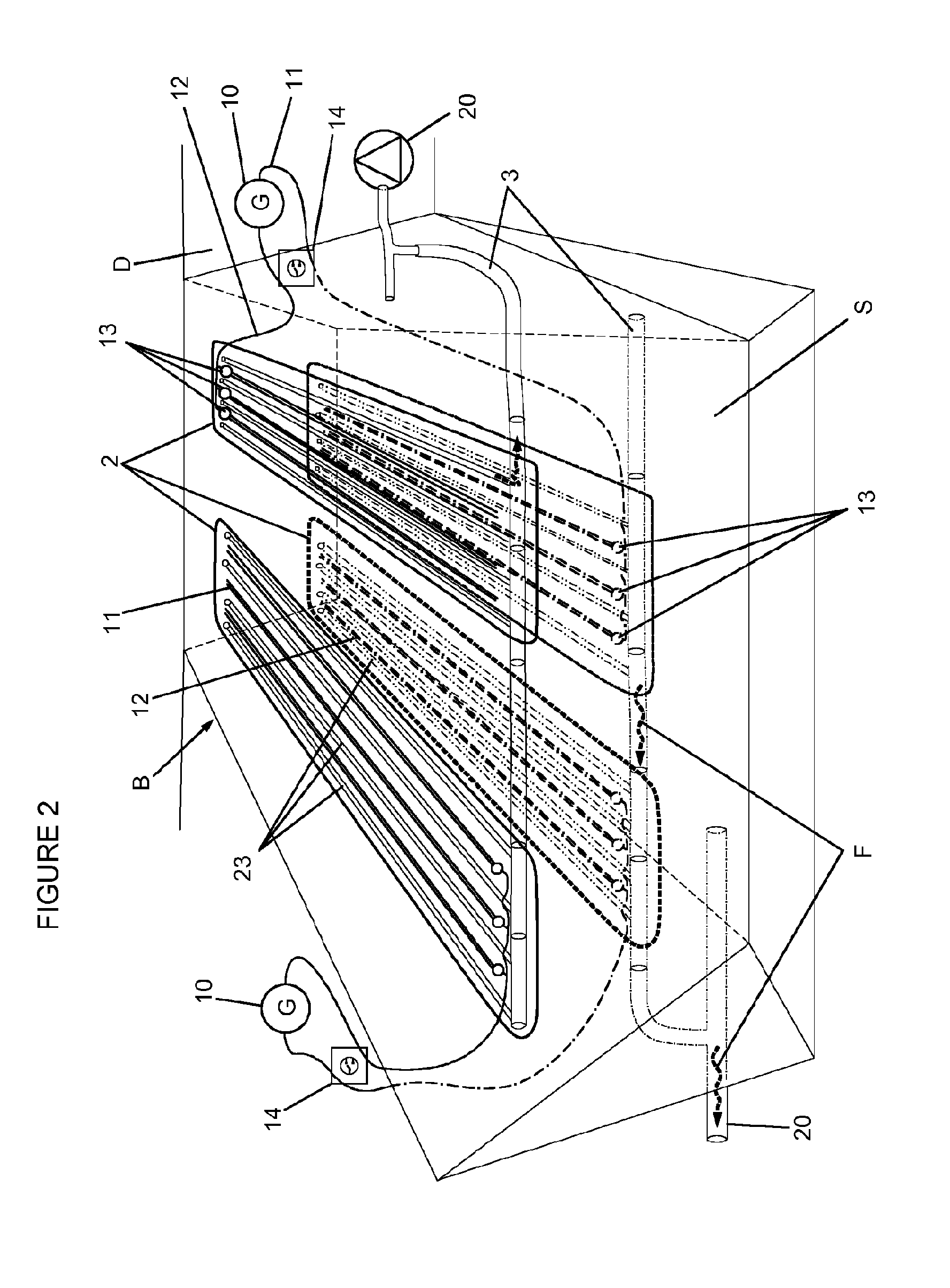Soil-treatment system, geocomposite for such a system, and soil consolidation method
a technology of geocomposite and soil, applied in soil preservation, water/sludge/sewage treatment, construction, etc., can solve the problems of low shear resistance, inability to store easily, and large production of mineral waste, so as to improve the current distribution
- Summary
- Abstract
- Description
- Claims
- Application Information
AI Technical Summary
Benefits of technology
Problems solved by technology
Method used
Image
Examples
Embodiment Construction
[0051]The present invention relates to a system, a geocomposite and a method of soil treatment (S), in particular for the treatment of mud or mining tailings as detailed in the introduction. This mud or tailings (S) is generally poured into a basin (B) surrounded by earthworks (D) and equipped with evacuation means such as evacuation pipes (3) and at least one evacuation device (20).
[0052]System
[0053]The soil treatment system, particularly advantageous for the decontamination of soils or the dewatering of mud or mining tailings by electrokinetic phenomena, comprises, firstly, at least one electric generator (10) and at least two electrodes (11, 12) and, secondly, at least one evacuation device (20). This evacuation device (20) is for evacuating the fluids (F), generally liquids, denoted here by the term “water” which is in fact used whether or not the water is still loaded with organic materials or minerals or other materials (it is specifically often a “diluted mud”.) This evacuati...
PUM
 Login to View More
Login to View More Abstract
Description
Claims
Application Information
 Login to View More
Login to View More - R&D
- Intellectual Property
- Life Sciences
- Materials
- Tech Scout
- Unparalleled Data Quality
- Higher Quality Content
- 60% Fewer Hallucinations
Browse by: Latest US Patents, China's latest patents, Technical Efficacy Thesaurus, Application Domain, Technology Topic, Popular Technical Reports.
© 2025 PatSnap. All rights reserved.Legal|Privacy policy|Modern Slavery Act Transparency Statement|Sitemap|About US| Contact US: help@patsnap.com



